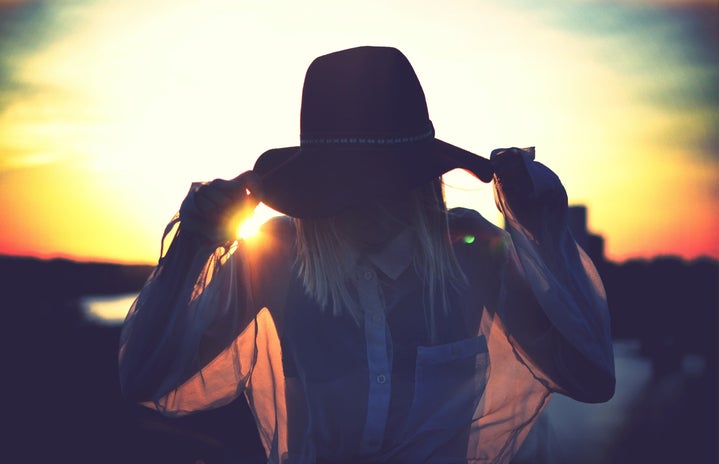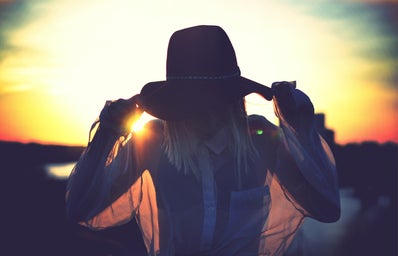Audrey Hepburn in “Breakfast at Tiffany’s” epitomized class amid a 1960s hippie counterculture– the film’s cover featuring Hepburn laced with a string of salt water pearls, a long stem cigarette in hand, and wearing, of course, a tasteful black dress. What once signified a period of mourning or the outward projection of a misunderstood youth has transformed into the universal shade of chic. From the millionaire on Wall Street in Giorgio Armani to the beatnik Brooklyn coffee shop performer in a fair trade turtleneck, black is an everyman’s color– accessible to all and eschewed by none.
The history of the black ensemble dates all the way back to 750 AD. King Charlemagne of Franks ordered farmers to wear black to ward off famine, as it represented mourning and repentance. But beginning in the 14th century black was worn almost exclusively by the aristocracy, as the deep color was difficult to achieve with natural dyes, making it expensive to produce.
New Yorkers seem to follow a similar hierarchical designation of haves and have nots, in other words New Yorkers and tourists. Rather than intermingling with the outsiders looking in, we distinguish ourselves –quite literally– from the sea of school field trips and family vacationers with our stark silhouettes and clean black lines. Wearing black is our way of letting the world know that we are not guests of New York making our way through the city like any other transient visitor. We are the inhabitants of the infamously uninhabitable– survivalists in the place that reveals who has what it takes. New Yorkers wear black as a symbol of pride, a badge of honor, an indication that this is the city to which we belong.
Perhaps what it takes to “make it” in New York is a willingness to concede the comforts of adolescence. New Yorkers know what it means to sacrifice for their city– be it disgustingly high rents, horns honking through the night, or silverfish haunting the halls of our sixth floor walk-ups. Manhattan dwellers learn to live with the consequences of New York– we adapt and accept the cost of having “what it takes.” Thus the opportunity for recognition shall never go unseized. Our affinity for black may even stem from a sort of sartorial indifference. New Yorkers don’t need to make bold fashion choices to be noticed because simply being “of the city” is enough to stand out.
But where did this allegiance come from? What led to the cultural adoption of black by New York City in the first place? Practicality may have something to do with it. Irregular access to washer-dryers paired with the fast-paced lifestyle that lends itself to New York effects a necessity for clothes that don’t show dirt. The greying cityscape is glittering and glamorous but far from pristine. From sitting on the subway to brushing strangers on the sidewalk to simply being exposed to the elements regularly, New Yorkers learn quickly to beware of telling colors. When washing your clothes consistently is inaccessible, one can only adapt to the circumstances.
Black may be an adaptation in more ways than one. Not only is the city dirty– it’s cramped. New Yorkers have extremely limited closet space. Like, Kylie lip kit circa 2015 limited. New Yorkers buy black because it goes with everything. That neon colorblock windbreaker just isn’t going to make the cut when it comes time to pick and choose. Thus the universality of black has actually helped to keep it in style rather than contributing to its untimely downfall. Black isn’t only the everyman’s color but the everyday’s color, serving to transition season to season and style to style. New York Fashion Institute of Technology student Maggie Ceisler calls black a “year round color.” Ceisler says, “Black is a neutral color which doesn’t really clash with anything, making it one of the most worn colors from season to season.”
Clement Greenberg’s 1939 essay “Avant-Garde and Kitsch” discusses the cyclical trend of the avant garde resisting the “dumbing down” of culture by mass consumerism. Typically, trends begin on the runways of New York or Paris and quickly proliferate to mass retailers like H&M and Forever 21, causing these trends to then become “dumbed down” in high fashion. As we’ve seen, this is untrue of the color black. While black is a color for everyone, it is still held in high esteem by the ultra-trendy. Universality typically denotes a decline in the world of fashion, but black has prevailed due to the circumstances and practicality of a life in New York.
Black is an undeniable staple of life in New York. We wear it to boast our ability to survive here, to even aid our survival here, and to assimilate into a culture that marks the trendy and thriving. By wearing so much black, New Yorkers dress with the intention of getting back what they’re giving up to live here in cool points. It’s a simple analysis of opportunity costs. Maybe our closets are small and maybe our clothes get dirty when we go outside, maybe our rent is high and our sanitation low, maybe it’s expensive and maybe it’s cut-throat and maybe it’s a giant that could swallow you whole if you forget to pay attention, but at the very least we are part of the cool kids club and we have the matching outfits to prove it.



